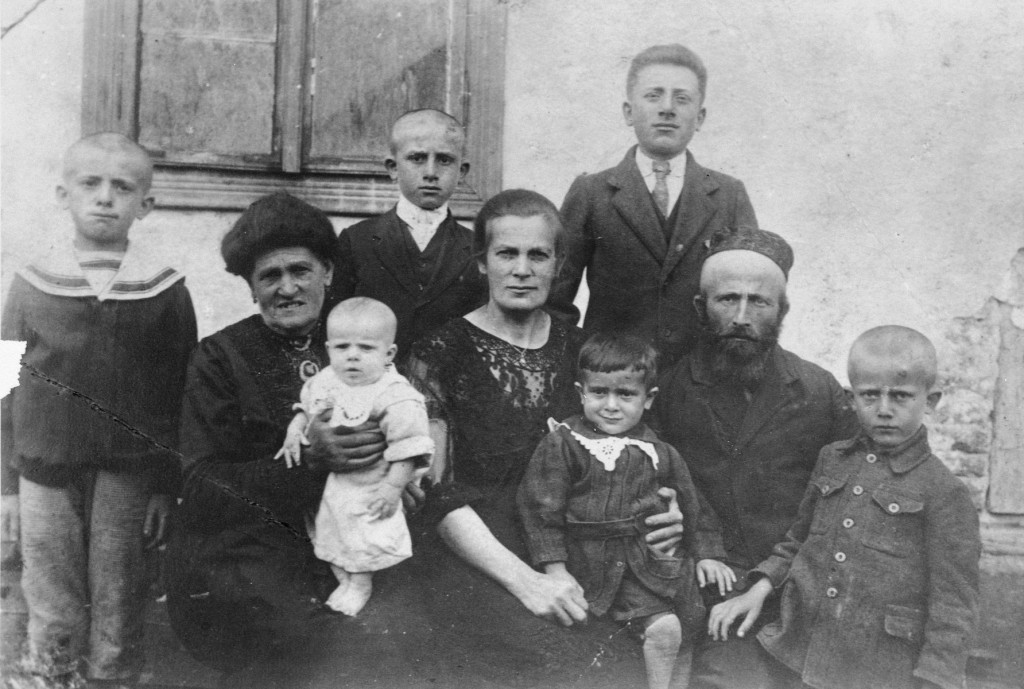
This portrait from around 1922 depicts three generations of the Menaker family. The hairstyles and clothing highlight the process of acculturation–adapting to and even adopting elements of the dominant, non-Jewish culture–in one Jewish family in the Lwów region. The older female relative wears a wig and a dress with long sleeves and a high collar. Orthodox Jewish women traditionally wore modest clothing and covered their hair with wigs or kerchiefs. By contrast, Szprinca (center) wears a dress with shorter sleeves and a lower, sheer neckline. Her head is uncovered. Szprinca’s husband Jakow, a kosher butcher, is more identifiably Jewish with his traditional beard and head covered by a cap or kippah. The couple’s sons show no obvious markers of Jewish identity. The older children are dressed in clothing typically worn by most schoolchildren in Poland at the time. Ephraim, the toddler sitting on Szprinca’s lap, has short hair. Hasidic boys under three years of age had long, uncut hair. The shaved heads of the other boys are also not reflective of Jewish tradition.
In September 1939, the Soviets invaded Poland from the east. The Menaker family lived under the Soviet occupation for almost two years. Ephraim was mobilized into the Soviet army in 1941, presumably around the time Germany attacked the Soviet Union. He served in the Soviet army until the end of the war. The rest of the Menaker family remained in the Lwów region, now occupied by the Germans. The Menakers and other Jews there were subjected to humiliation, theft, forced labor violence, and murder. From the fall of 1941 to the fall of 1942, the German authorities forced Jews from Lwów and the surrounding area to move into the Lwów ghetto. Eventually, the Germans deported the Menakers and others from the ghetto to the Belzec killing center where they were murdered. Of the Menaker family, Ephraim was the only one to survive the Holocaust.
We would like to thank Crown Family Philanthropies, Abe and Ida Cooper Foundation, the Claims Conference, EVZ, and BMF for supporting the ongoing work to create content and resources for the Holocaust Encyclopedia. View the list of donor acknowledgement.